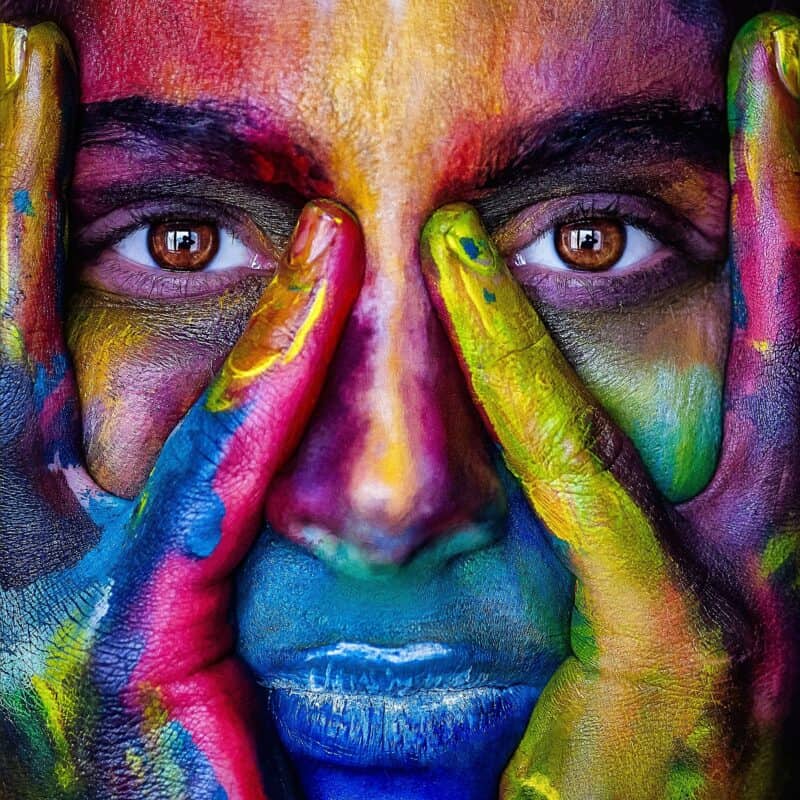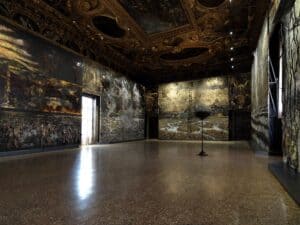This week’s guest is Alma Zevi, founder and director of the eponymous gallery based in the heart of Venice – ALMA ZEVI. ‘My gallery started as a project space in Celerina, a village in the Swiss Mountains. When I moved to Venice, I opened my space in San Samuele, very close to the Palazzo Grassi, where we have a programme which is a mixture of emerging and established artists with historical shows. That was five years ago, and now we also have an office in London that works as a showroom.’ The spaces in Venice and Celerina are home to yearly artists residencies, where the gallery talents can spend a few weeks to explore different cities and produce new work. In London, the office hosts a rich programme of talks, private views, and events.
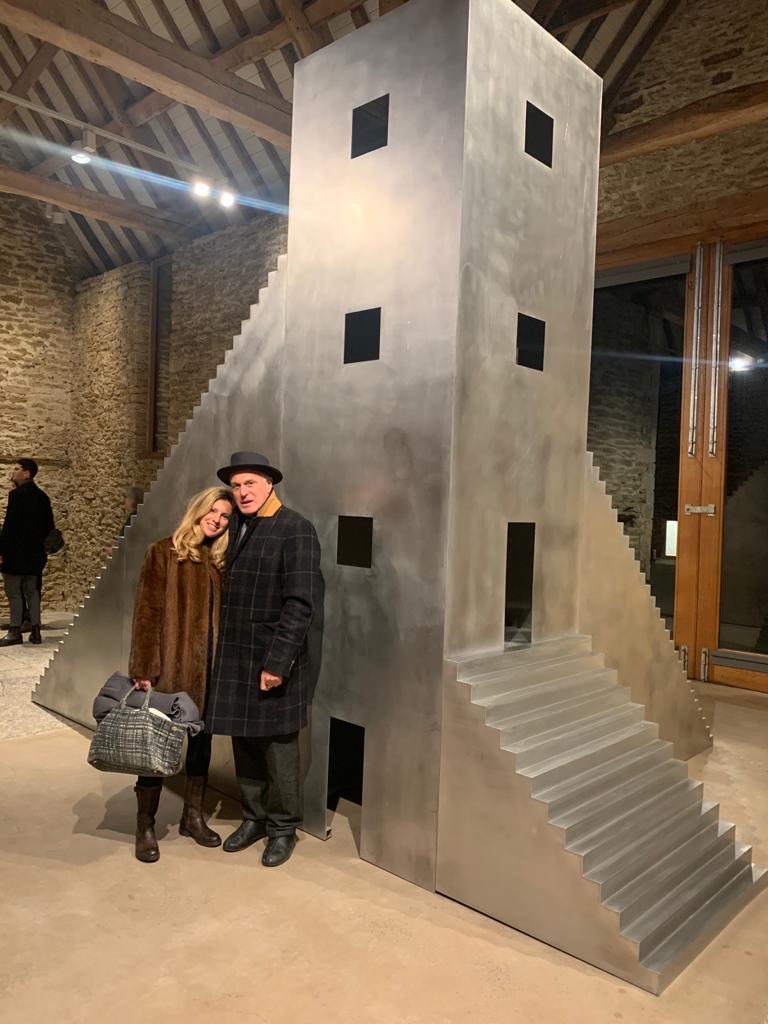 Alma Zevi with artist Not Vital
Alma Zevi with artist Not Vital
1. Art organisations and individuals are organising online initiatives to stay creative. Have you taken part in any or organised any?
We’ve been careful not to overload people’s inboxes with hundreds of newsletters, as I think it is a bit distracting! However, the ALMA ZEVI team and I have had great fun putting together different initiatives online. The lockdown has provided an opportunity for us to focus on what’s important, showcasing our artists and strengthening our ties to institutions. On our Instagram page we have put together a weekly’s “Curator’s Picks” which features 5 questions with international curators and art historians – from Magda Keaney at the National Portrait Gallery, to Hans Ulrich Obrist at the Serpentine. We have also given our Instagram platform over to our artists, giving them full freedom. These takeovers have shown us what they have been up to at home and in their studios in isolation. Finally, we worked with a group of wonderful galleries from across Europe on a shared viewing platform showing remarkable young artists. It was an interesting exercise to be working collaboratively with other gallerists who I count as good friends.
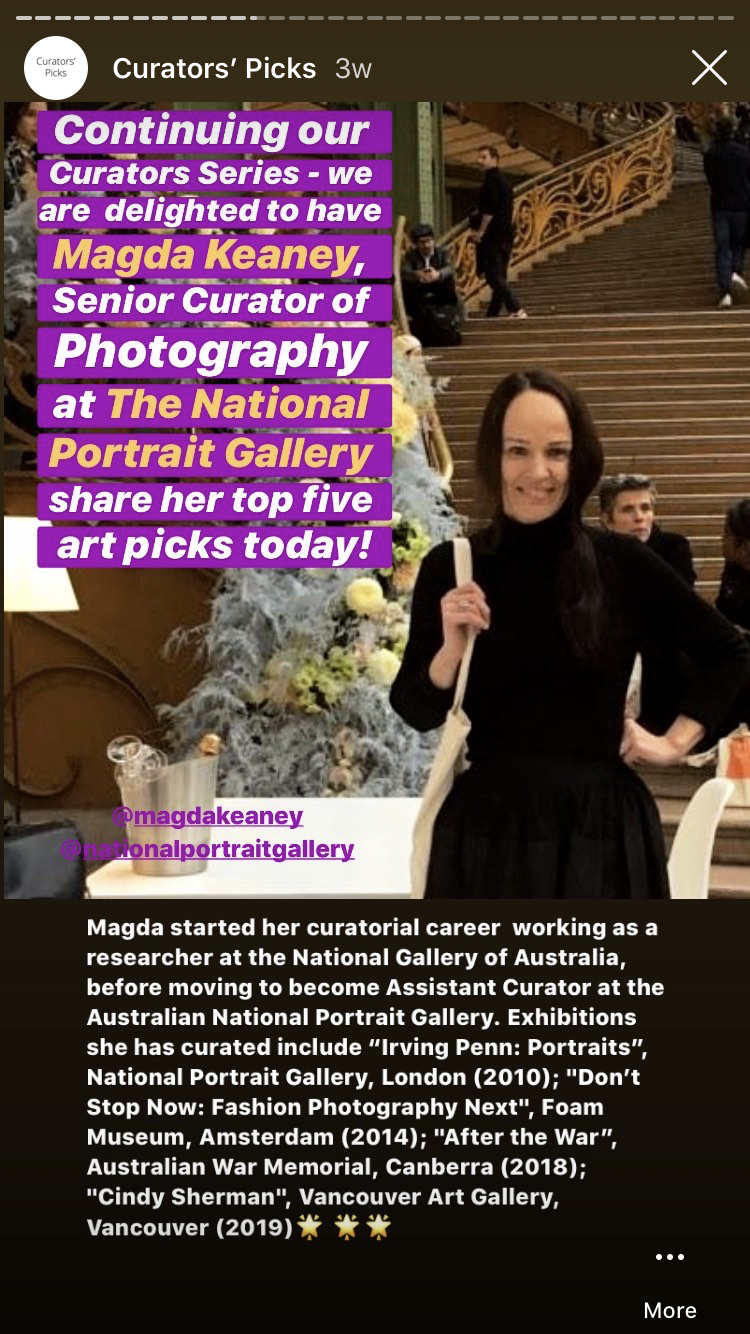
Madga Keaney, Senior Curator, Photographs, National Portrait Gallery, London, featured in ALMA ZEVI Curator’s Pics, April 2020
2. What are your future projects as a Gallery and point of reference for many artists?
I am currently working on the programming for the next few years. We like to research our exhibitions thoroughly, and often work on a long lead-time to allow ourselves the chance to do this properly. We also have an active programme of talks and events in Venice and London. Another important part of the gallery is hosting residencies. It’s great to be able to offer our artists the opportunity to come to Venice or Celerina, where they can take advantage of these unique cultural heritages and make new works.
3. Can you talk about the disruptions caused by the pandemic? Did you have any show / project planned that has been disrupted by Covid-19?
Unfortunately, quite a few events got cancelled. Katy Stubbs, a hugely talented young artist working with ceramics, had her debut solo exhibition postponed at the gallery in Venice in March. This was such a shame – the work is beautiful , funny and tragic – and many of the pieces were conceived in Venice as part of her residency in 2019. We will open the exhibition later this year. We also had some amazing talks planned: Juliana Cerqueira Leite was to be “in conversation” with the historian and novelist Lisa Hilton in Venice. At our London office, Tereza Cervenova (who recently joined the ALMA ZEVI roster of artists), would have participated in an artist talk with the National Portrait Gallery, where her work has recently joined the Permanent Collection.
4. Do you think this crisis will change us, and the art world permanently? Or will we go back to our hectic lives as soon as we will be allowed to?
It’s hard to say. There are a huge number of variables involved; both social and economic. The important thing is to focus on helping those who need it the most during what is likely to be quite a lengthy recovery period, as well as continuing to be responsible in the way we do business.
5. What have you learnt from the crisis?
That there are many positives to being a small gallery with a small team. We can be flexible and adapt to new situations quickly.
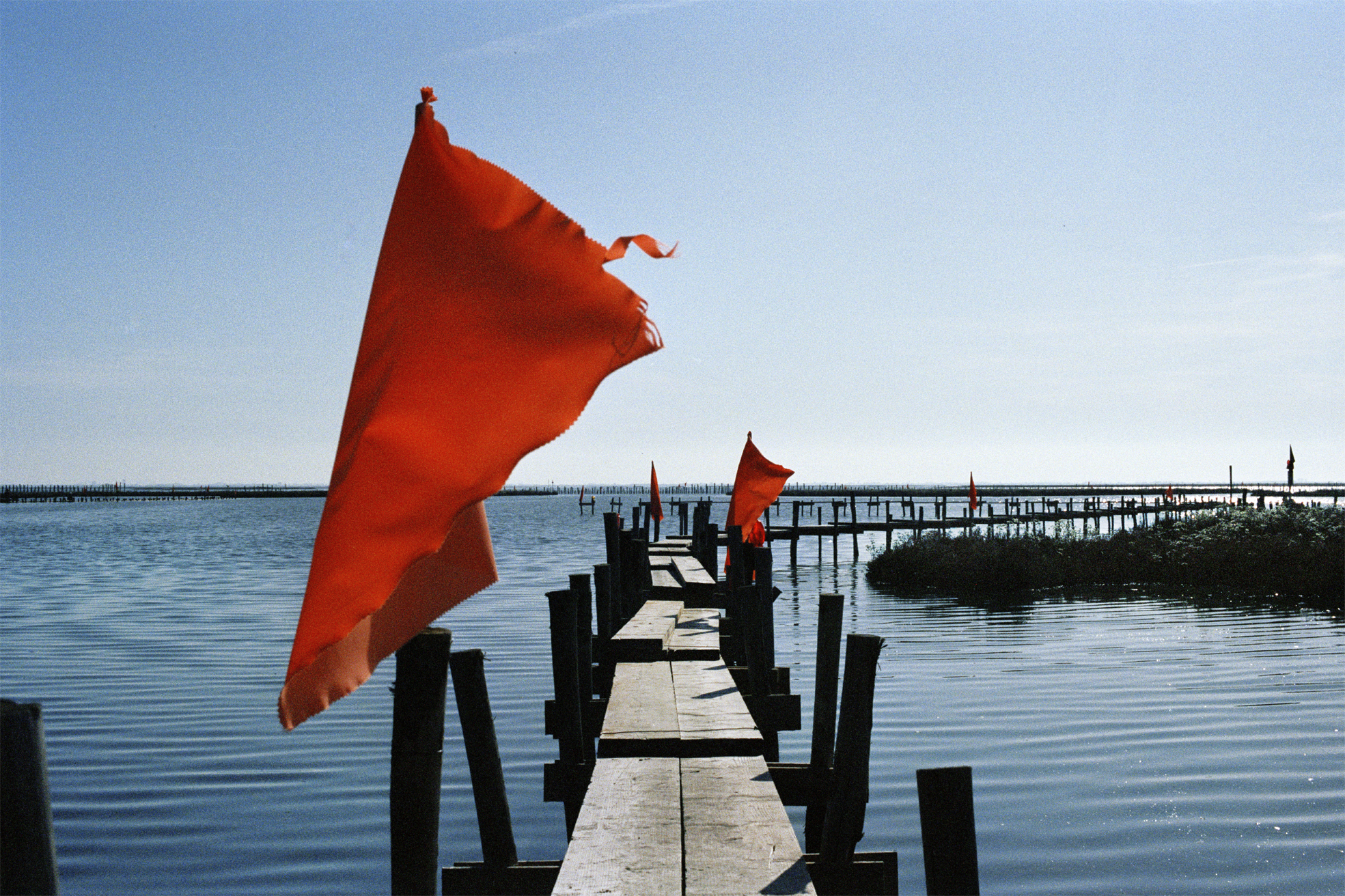
Tereza Cervenova ‘Salt Marshes of Le Trezze, Veneto, 2019’, (2019) Image Courtesy the Artist and ALMA ZEVI
6. Do you see any silver linings in this particular time?
The obvious one is the positive effect it has had on the environment. I only have to look at the wonderful images of the canals in Venice which are crystal clear to feel immensely cheered! In terms of the gallery, I am usually on a plane once a week and whilst we practice carbon offsetting, it’s undeniable that the art world with all its international events is terrible for the environment.
One thing I am really enjoying is the frequent and extended phone calls I am having with artists, clients and colleagues in the museum world. These are the people who make a gallery and I have loved hearing what they have been up to. It’s been helpful as a time to really strategise a plan for the gallery moving forward, and spend a little extra time researching shows. I have also loved looking at other online exhibitions and fairs, learning about new artists. Although we would obviously prefer to experience art in the real life, it is a luxury to have all this information at your fingertips.
What are your thoughts on the (unavoidable?) digital monopoly of art at the moment?
It’s an amazing tool for discovery; but like most advances in technology, it comes with drawbacks. Nothing will ever replace standing in front of a piece of art, and I think we run a risk of making encounters ‘in real life’ less important somehow. During Covid-19, activating the digital realm is obviously the only way artists, galleries and museums can connect with their audiences, but I’m personally looking forward to a world where I can walk into a viewing room and experience the artwork in the flesh.
I am reading a lot on the “democratization” and wider availability of art in these times. What is your take on this in relation to the art market? Are we more connected, or does it all feel too abstract, virtual, afar?
The art market, as in all industries, has given individuals the ability to access art (and information about art) without an intermediary (ie gallerist or dealer) more easily that ever. Collectors can reach out to artists directly on Instagram or forge their own relationships with galleries very easily… using Artsy, for example. Never has there been more to look at and more to choose from. Does that make us feel more connected? Maybe. There are definitely some wonderful initiatives that I would describe as ‘democratising’ going on at the moment, such as the #ArtistSupportPledge on instagram. That feels like an important thing to be a part of.
9. What’s on your reading list and what book made the greatest impact on you?
I just started reading Edmund de Waal’s “The White Road” (2015). It starts with his trip to Jingdezhen (China), known as the “Porcelain Capital”, where porcelain has been produced for over 1000 years, to the highest level of craftsmanship. This is a place I have been wanting to visit for a long time as the artist Not Vital makes his incredible ceramic sculptures there and it sounds amazing. I have worked with Vital for many years, and I am excited to open an exhibition of his work this Autumn at our Venice gallery. I also really enjoyed de Waal’s “Hare With the Amber Eyes’” too – it is a joy to read something so exquisitely researched and the story is remarkable.
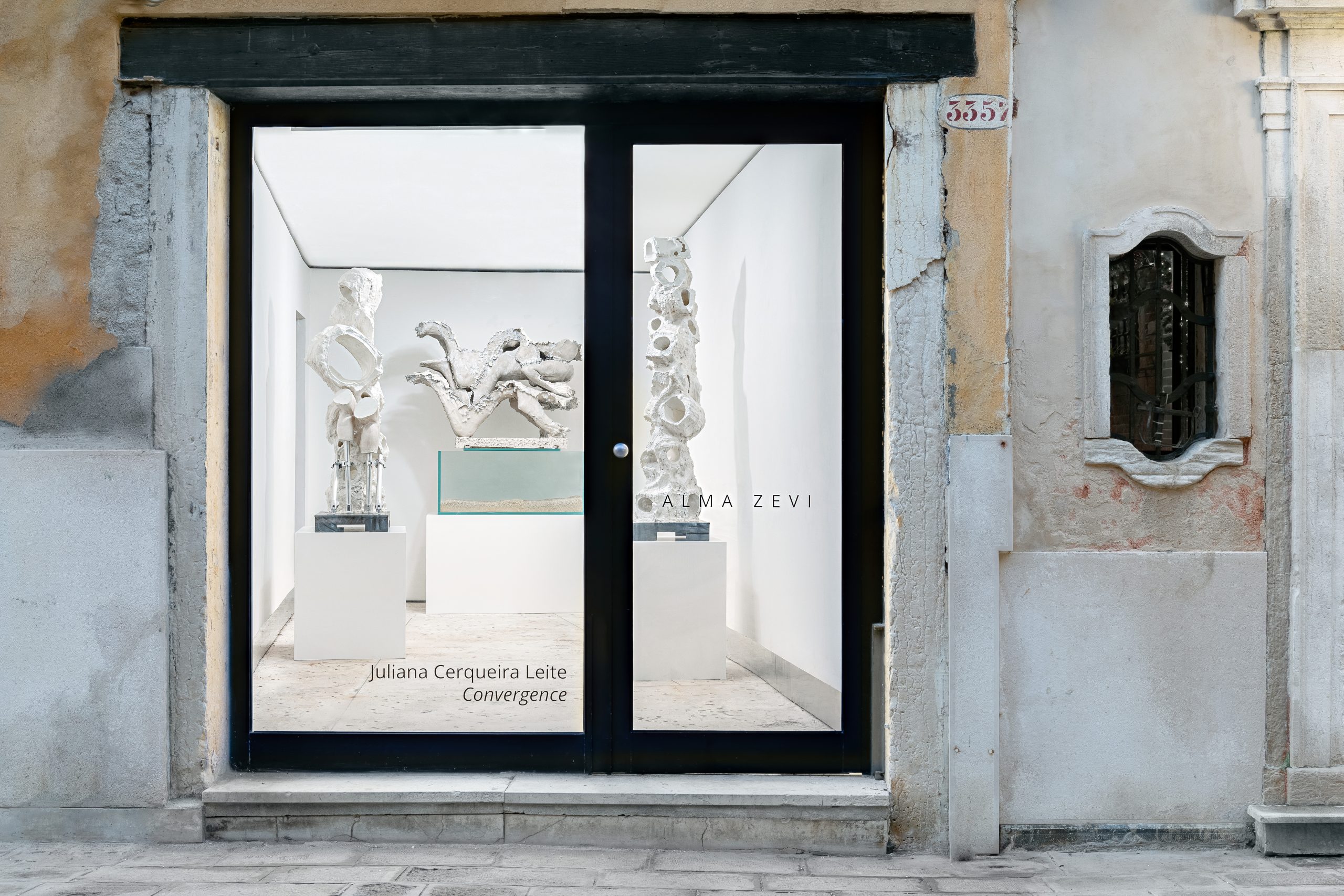
Installation view of ‘Juliana Cerqueira Leite: Convergence’ at ALMA ZEVI Venice, 2020. Photo credit Enrico Fiorese
10. Are you following any “Quarantine Instagram” content? What’s your favourite live / podcast /account?
Jennifer Higgie’s “Bow Down: Women in Art History” available on the Frieze magazine website, and also Ben Luke’s podcast at the Art Newspaper which is wide-ranging and very informative.
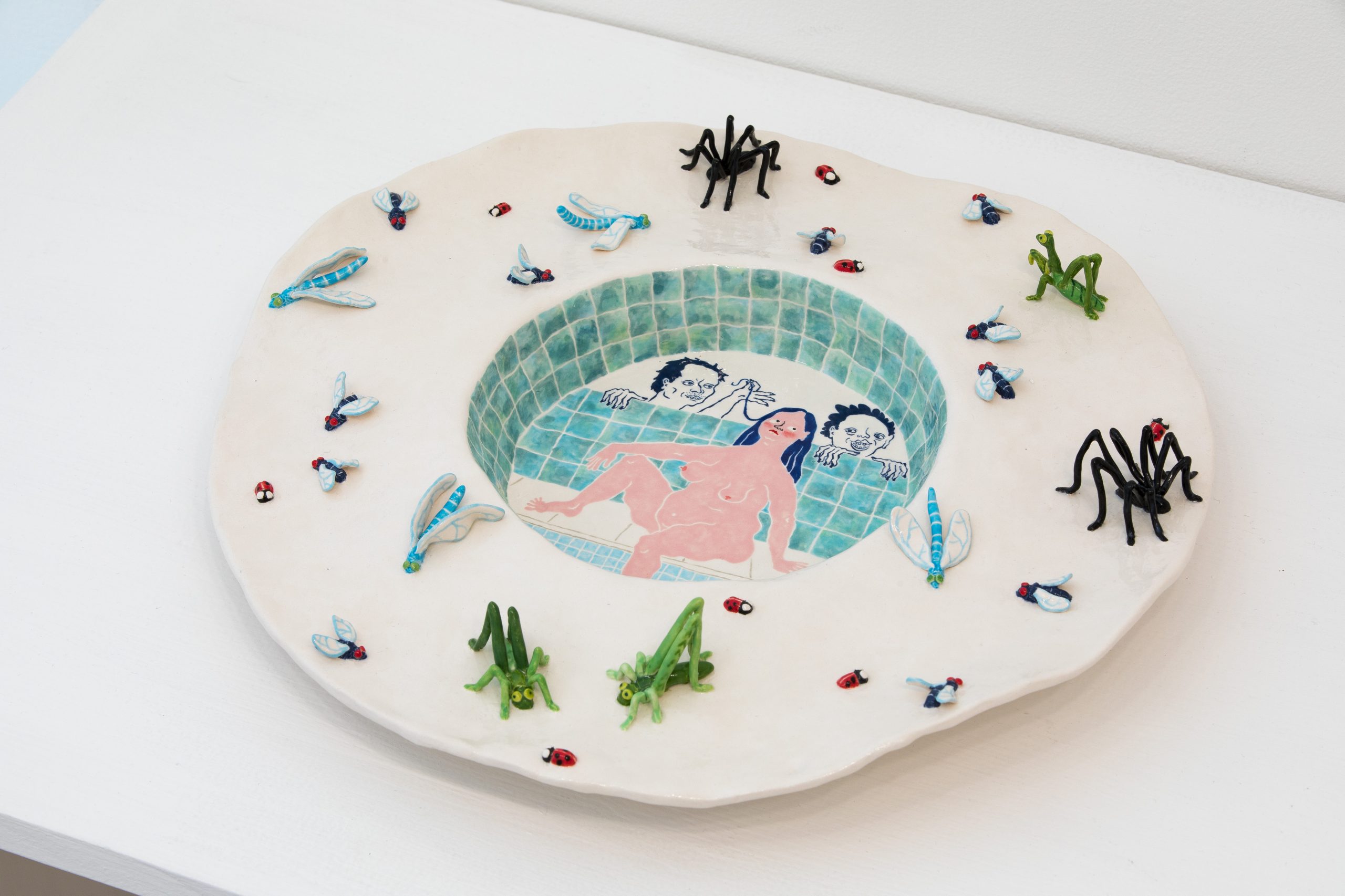
Katy Stubbs ‘Susanna and the Elders’ (2018) in Odalisque With Red Culottes, ALMA ZEVI Venice, 2018. Photo credit Enrico Fiorese

